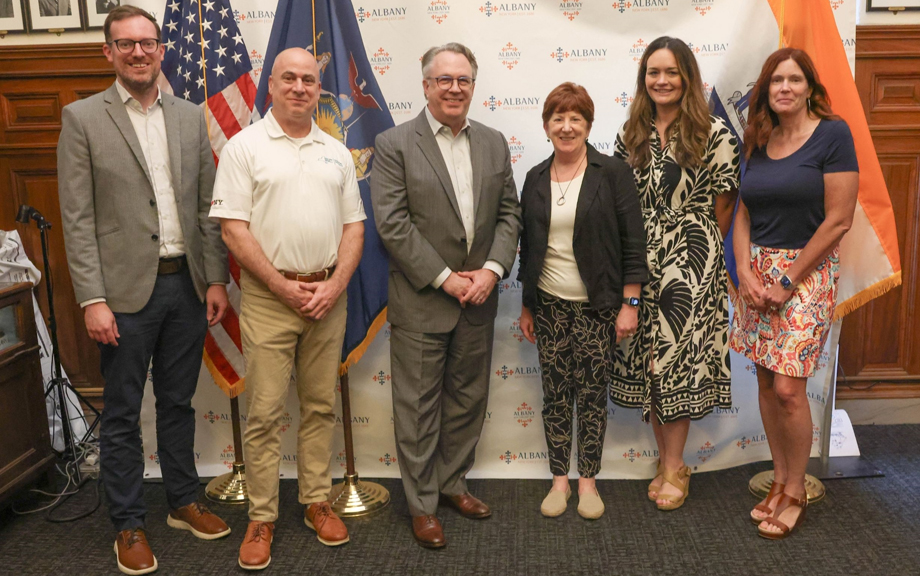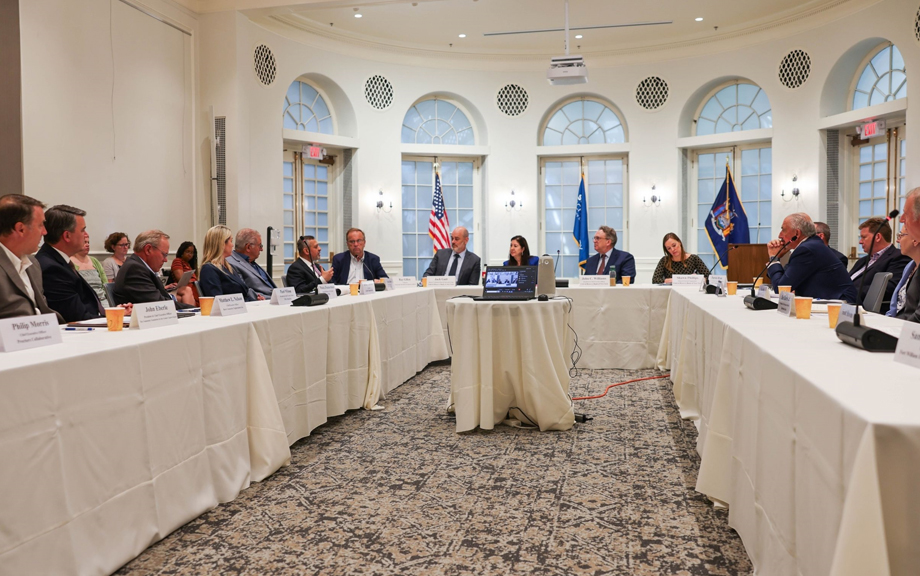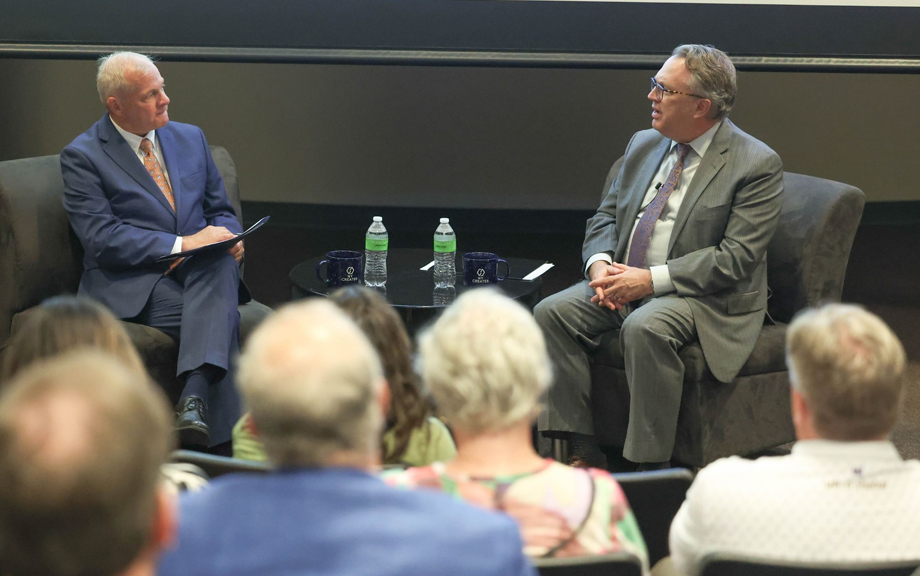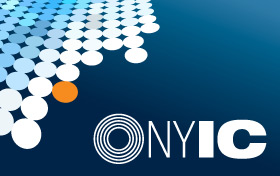
New York Fed President John C. Williams spent two days in June visiting leaders in government, business, and economic and community development in New York’s Capital Region to learn more about the area’s economic opportunities and challenges. The visit—part of the New York Fed’s ongoing efforts to assess economic conditions across the Federal Reserve’s Second District—gave President Williams an opportunity to engage directly on issues specific to the region.
The Capital Region, the eastern portion of New York state bridging the Hudson Valley and the Adirondacks, has a roughly $100 billion economy, producing about 5 percent of New York state’s GDP, according to New York Fed researchers. The state’s capital, Albany, and its metropolitan area are home to roughly 900,000 people. The Albany area is among the fastest growing in upstate New York, supported by state government, which has helped attract skilled workers, and the development of a high-tech cluster largely focused on nanotechnology microchip circuits.
Here are some of the themes that emerged during the discussions in Albany, Schenectady, Niskayuna, and Troy:
Workforce Challenges and the Impact of Hybrid Work Models
Business leaders from a variety of sectors said it was difficult to attract and retain workers. While job applicants are plentiful, only a handful are qualified for open jobs, and many seemed disinterested in working full time or at all. Business leaders said new employees are willing to leave for modest wage increases, even when companies offer competitive benefits. Some employers are trying enticements like unlimited paid time off with manager approval for skilled workers, and others noted that stronger workforce development partnerships with schools and universities might help. Uncertainty about future economic conditions was a prominent theme in many discussions, with some employers pausing plans to increase or reduce their workforce until the picture is clearer.

Another theme was the impact of hybrid work on urban areas. Many workers, including New York state government employees, are still working part of the week from home, reducing daytime foot traffic in areas like downtown Albany. Less foot traffic has hurt local businesses and contributed to concerns about public safety. Some business leaders, however, said they have successfully adjusted to the hybrid work model. For example, some restaurants have trimmed staff and decreased the days and hours they’re open while operating successfully and giving workers and owners a better quality of life. To draw more traffic to downtown, Albany officials are positioning the city as a destination, leveraging the city’s arts and cultural institutions.
One sector that seems somewhat immune to these workforce challenges is research and development, particularly in the fields of nanotechnology and semiconductors. During the June trip and prior visits to upstate New York, R&D leaders expressed few or no challenges in attracting or retaining qualified workers, in part due to competitive compensation and an innovative environment focused on new discoveries. Leaders in the sector said they had some concern over immigration policies causing delays and uncertainties for work visas for international hires.
The region’s population has increased in recent years due to an influx of immigrants, which reversed a downward population trend that began with the COVID-19 pandemic. Outside R&D, employers who have traditionally relied on immigrant communities to meet labor needs also noted the impact of changing immigration policies on their ability to continue to do so.
Housing, Childcare, and other Challenges Impacting Communities
Like other areas in the Second District, communities in the Capital Region are struggling with housing and childcare affordability and availability. Nonprofit leaders said costs to build more affordable housing continued to surpass potential sale prices, even for prefabricated houses, deterring development. The communities they serve continue to struggle to afford food, childcare, and other necessities, they said, especially in more rural areas. Philanthropic support is helping to meet some needs but is often focused on direct impact, such as providing meals, rather than addressing underlying causes, such as low wages or mental health. The nonprofits noted difficulty in attracting and retaining workers, as well as funding concerns.
Despite challenges, nonprofits continue to develop creative solutions to address growing needs. For example, the visit included a tour of Capital Roots, a nonprofit in Troy, New York, focused on addressing nutrition and public health through community-focused programs. One such effort is a two-tiered pricing system in the market it operates, where items have a price in purple for those who can pay full price and green for people on fixed incomes or public assistance. Other nonprofit efforts are focused on free or low-cost architecture and development services to help homeowners add an additional dwelling unit on their property, adding a revenue stream for the homeowner and increasing the supply of affordable housing.

Growth in Key Sectors
The visit also included tours and meetings to better understand two growing sectors in the area: nanotech and video gaming. At the Albany NanoTech Complex Site, NY CREATES leaders gave an overview of the research, development, and commercialization of nanotechnology and semiconductor innovation in New York’s capital. The sprawling site is the largest and most advanced semiconductor R&D facility in North America, employing around 1,000 people. Its expansion efforts are projected to create nearly 1,000 more jobs. The complex, which fosters public-private partnerships and industry-academic collaborations, has attracted over $20 billion in public and private investments.
President Williams and staff also visited the growing video gaming industry in Troy, New York, where over 20 studios employ over 500 workers. The industry is partnering with local universities, including Rensselaer Polytechnic Institute, to expand its economic potential in the Capital Region.
Looking Ahead
While the area continues to face affordability and workforce challenges, many leaders noted its recent growth and expressed optimism about the region’s potential, given its investments in technology and innovation.
Shawn Phillips is the head of external engagement in the Communications and Outreach Group at the New York Fed. She is responsible for broadening and deepening relationships with civic, business, academic, and other stakeholders within the Federal Reserve’s Second District.
The views expressed in this article are those of the contributing authors and do not necessarily reflect the position of the New York Fed or the Federal Reserve System.










